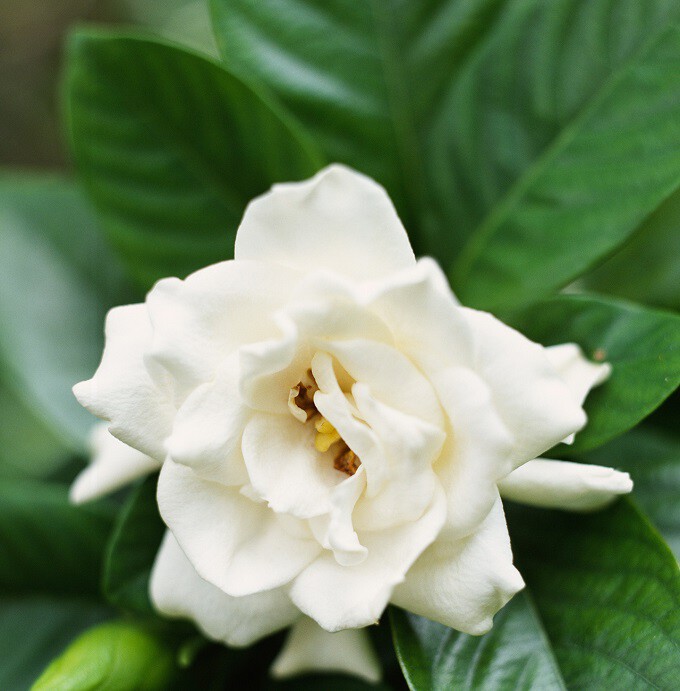Here's how to enjoy gardenia at its perfumey best.

Is any flower in the garden more powerfully intoxicating than the gardenia? No. Raising a blossom to the nose and inhaling once can make a strong man swoon.
Gardenia is such a classic Southern plant that many Southerners assume it originated here. It did not. Traders in the Far East discovered it growing in China, Korea, and Japan. So sweet were its blooms they decided to bring it back to Europe. Before it got there, the traders stopped at the Cape of Good Hope on the southern tip of Africa and planted it there. That's how it got its other common name, "Cape Jasmine." (Even though it's not a jasmine, its scent reminded them of it.)
From Africa, gardenia, not yet given a botanical name, showed up in Europe. It didn't like the climate there and was pretty much relegated to growing in hothouses. Meanwhile, in Charleston, South Carolina, botanist Alexander Garden was busy trading American native plants with English merchant, John Ellis, and Carl Linnaeus in Sweden. Ellis persuaded Linnaeus–the creator of the two-word system for botanical nomenclature – to name the new plant after Garden. Thus, Gardenia jasminoides was born. In 1752, Garden became the first person in the United States to successfully grow gardenia outdoors.
The plant was a big hit. Today, gardenias in the South are ubiquitous, growing all the way from Virginia to the tip of Florida. Naturally, a few problems pop up now and again, and when people need answers, they correctly turn to Grumpy. Let's address some common concerns.
Leaves on my gardenia are turning yellow and dropping. Is it dying?
Probably not. Even on evergreens, leaves don't last more than a couple of years. Old leaves drop and new ones replace them. Such leaf drop usually happens in spring.
My gardenia hasn't leafed out yet. Is it dead?
Well, since it's supposed to be an evergreen, that seems likely.
The leaves of my gardenia have turned light yellow with green veins. Why?
This is due to a condition called chlorosis brought on by a lack of iron in the soil. Acid soils have plenty of available iron. Alkaline soils do not. You need to apply garden sulfur to the soil to acidify it or feed with an acid-forming fertilizer like Espoma Holly-tone. In places that naturally have high pH, alkaline soils such as Texas and Oklahoma, try growing gardenia in a large pot filled with potting soil.
How much cold will gardenia take?
Most older kinds aren't cold-hardy north of USDA Zone 7 (damaged or killed by temperatures below 15 degrees). However, newer selections offer better cold tolerance. They include 'Kleim's Hardy' (hardy to 0 degrees), 'Crown Jewel' (-10 degrees), 'Pinwheel' (-10 degrees), 'Chuck Hayes' (0 degrees), and 'Shooting Star' (0 degrees).